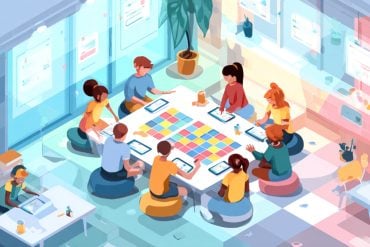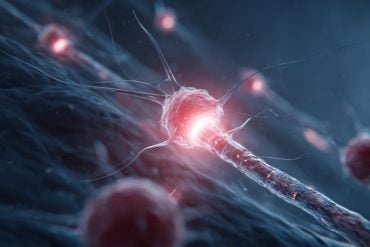Summary: Researchers embark on the AI STORIES project to explore AI-generated narratives and their cultural impacts. The study aims to delve into how large language models (LLMs) like ChatGPT interpret and produce stories, challenging the notion that AI merely mimics human language without understanding.
By comparing Scandinavian, Australian, and Indian or Nigerian narratives to dominant American stories, the project seeks to prevent the homogenization of global narratives by AI. The researchers advocate for a new narratology in AI development, emphasizing the importance of narrative theory in shaping ethical and diverse AI technologies.
Key Facts:
- AI STORIES, led by Jill Walker Rettberg, examines the deep narrative structures in AI language models, funded by a 2.5 million Euro ERC Advanced Grant.
- The project contrasts diverse global narratives with predominant American and English narratives in AI, highlighting the risk of narrative homogenization.
- Rettberg calls for a new narratology that incorporates narrative theory in AI development, aiming to influence policymakers, developers, and educators.
Source: University of Bergen
Professor Jill Walker Rettberg, Co-Director of the Centre for Digital Narrative at the University of Bergen, is awarded an ERC Advanced Grant for the project AI STORIES. The grant consists of 2.5 million Euro over 5 years. This is Rettberg’s second ERC Grant.
“The AI STORIES project builds on the premise that storytelling is central to human culture, with narratives shaping our understanding of the world. We will study artificial intelligence and how it creates new narratives,” says Rettberg.

Generative AI has been dubbed a “stochastic parrot”, mimics of language patterns who doesn’t really understand what they are saying. AI STORIES posits that the large language models (LLMs) which form the foundations for ChatGPT are more influenced by deep narrative structures than previously recognized. To manage AI bias, we need to consider the underlying narratives in the training data and not just proximity of words and images.
When Microsoft’s AI chatbot expressed its love for a journalist in 2023, was it really in love? Most likely not. Generative AI is, after all, a statistical game, and not actual feelings. This new research will test the hypothesis that the AI said “I love you” because it is trained on so many of our sci-fi stories where AI gains conscience and human emotions.
AI stories are our stories, but to what end?
Earlier Rettberg has talked about how AI can replace or homogenise stories from certain storytelling traditions, like the Norwegian childrens’ story When the Robbers Came to Cardamom Town:
“This story is more than a shared cultural reference – it supports the Norwegian criminal justice system’s priority of rehabilitation over punishment. It is distinct from Disney movies, with their unambiguous villains who are punished at the end, and from Hollywood bank heists and gangster movies that glorify criminals.”
The project will conduct case studies on Scandinavian, Australian, and Indian or Nigerian narratives, contrasting them with the dominant American and English-speaking narratives in LLMs.
“Generative AI might well bury stories like Cardamom Town by stuffing chatbot responses and search results worldwide with homogenized American narratives,” says Rettberg.
A new narratology for AI
“I think what we need is a new narratology, to see how narrative theory shapes and can be used when we develop and use AI,” says Rettberg.
The new narratology will inform policymakers, developers, and educators on the future direction of AI. Current LLMs has mainly been developed by computer scientists and linguists, but Rettberg posits that narratologists should perhaps be just as important to the AI future.
Rettberg and her colleagues will cooperate with developer industry and developer communities.
“I congratulate Jill Walker Rettberg, who solidifies her position at the top of her field, demonstrating both quality and originality. Her achievements serve as an inspiration for others at UiB,” says University of Bergen’s Rector Margareth Hagen.
With Rettberg’s project, researchers at the University of Bergen have so far secured a total of 50 ERC grants spanning the period from 2010 to 2024.
1 of 255 among 1829 – strong competition
Rettberg is among the 255 selected outstanding research leaders in Europe to receive this grant, according to a press release from the ERC.
The competition attracted 1,829 proposals which were reviewed by panels of internationally renowned researchers. The funding is amongst the EU’s most prestigious and competitive, providing leading senior researchers with the opportunity to pursue ambitious, curiosity-driven projects that could lead to major scientific breakthroughs.
The new grants are part of the EU’s Horizon Europe programme.
ERC grants
Prestigious research funding with applicants from all over the world. Awarded by the European Research Council (ERC).
ERC Advanced Grants are awarded to established world-class researchers with up to €2.5 million over 5 years.
Large Language Models (LLM)
Large language models are algorithmic foundations for generative AI chatbots like OpenAI’s ChatGPT and Google’s Bard. LLMs are fed vast datasets, including articles, books, and internet resources, with the goal of generating human-like responses to questions or prompts from the users.
Based on the training data it can be used to generate everything from wedding speeches to fact boxes to frameworks.
Generative AI has uses across a wide range of industries, but it also poses potential challenges and risks, such as cybercrime, the creation of fake news or deepfakes that can deceive or manipulate people.
Jill Walker Rettberg and ERC
AI STORIES is Professor Rettbergs second ERC Grant, the first was a ERC Consolidator Grant on the project Machine Vision, which ended in 2023. She is also the Co-Director of the Center for Digital Narrative.
About this artificial intelligence research news
Author: Åshild Nylund
Source: University of Bergen
Contact: Åshild Nylund – University of Bergen
Image: The image is credited to Neuroscience News






